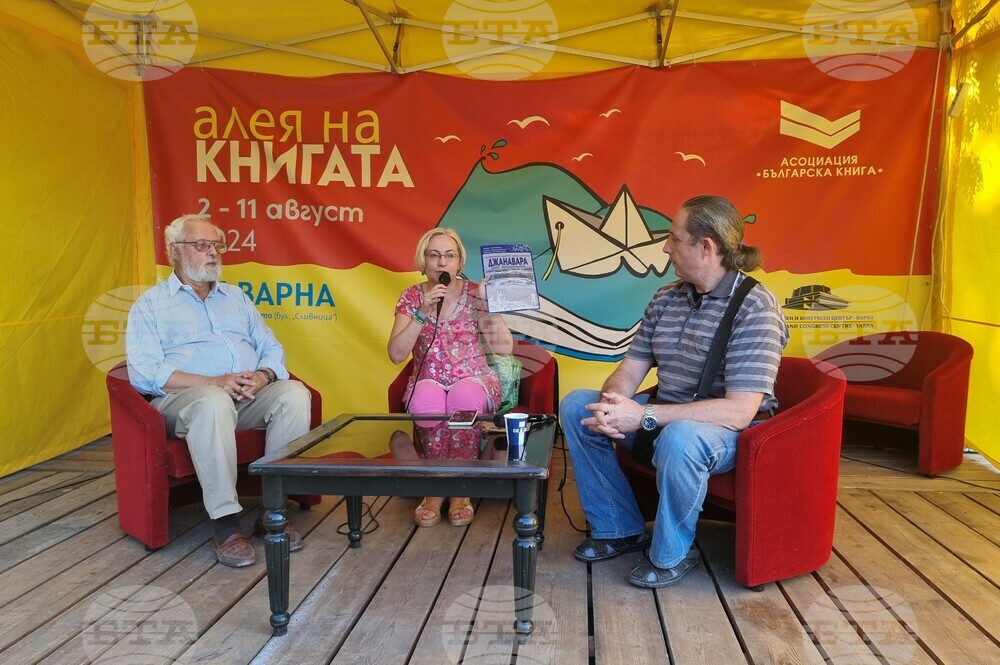site.btaAuthors of Comic about Historic Djanavara Hill Monastery Complex Preparing New Publication


A comic dedicated to the Varna Chalcolithic Necropolis is in the process of publication, said author Elena Vladova during the Varna Book Alley fair presentation of her and Nikolay Rusev's comic about the early Christian monastery complex in Djanavara Hill area near Varna. The comic came out in the autumn of 2023 under a project supported by the Municipality of Varna. The story of the comic is based on an interview with archaeologist Alexander Minchev, who led the studies of Djanavara.
Vladova also said that she and Rusev are working on a new comic dedicated to the Varna Chalcolithic Necropolis. Illustrated stories are a way to present information to any audience, the author said.
Alexander Minchev told the audience the history of the study of the Djanavara Hill Christian Monastery Complex, which began in the first two decades of the 20th century, when Hermann Skorpil uncovered an early Christian church from the second half of the 5th century. The building is unique in its plan among the nearly 400 similar ones in Bulgaria, Minchev pointed out and added that it has similarities with temples of the same era from Asia Minor and the Palestinian region of the then Byzantine Empire.
Under the altar of the church, Skorpil discovered a crypt with a reliquary, which is the only one of its kind in the whole world, consisting of three parts placed one inside the other, Minchev recalled. The parts are marble, silver and gold, decorated with precious stones, and house the relics of an unknown saint. The reliquary can be seen in the Varna Archaeological Museum. One of the other finds is a marble font for holy water, which bears the name of one of the famous military leaders of Emperor Justinian from the middle of the 6th century, who after his retreat most likely settled in Odessos, evidenced by the tombstones of his son and his wife, the archaeologist also reported.
During his research, Skorpil suggested that the church in Djanavara Hill was the centre of a monastery. After he died, however, his documentation was given to an American professor to be published, but it disappeared during along with all the photos, plans and drawings of the mosaics. About 40 years ago, the Regional History Museum in Varna acquired a copy of Skorpil's English manuscript translations, but without visual material.
In 1999, Minchev started the excavations again and with little means and a lot of enthusiasm they cleared the church and photographed the mosaics. He also made several side borings which proved that there was a monastery around, and the excavations showed that the church stood in the middle of a large courtyard with a colonnaded atrium and many surrounding rooms associated with monastic life, including a scriptorium, water pipes and a running toilet. water. It is an extraordinary facility for these centuries, the archaeologist said.
Minchev recalled that for three years it has not been possible to conduct research at the site due to issues with the ownership of the plot, which after 1944 was handed over by the Forestry Museum and has not yet been returned to the Municipality of Varna in order to continue the excavations.
/DT/
news.modal.header
news.modal.text